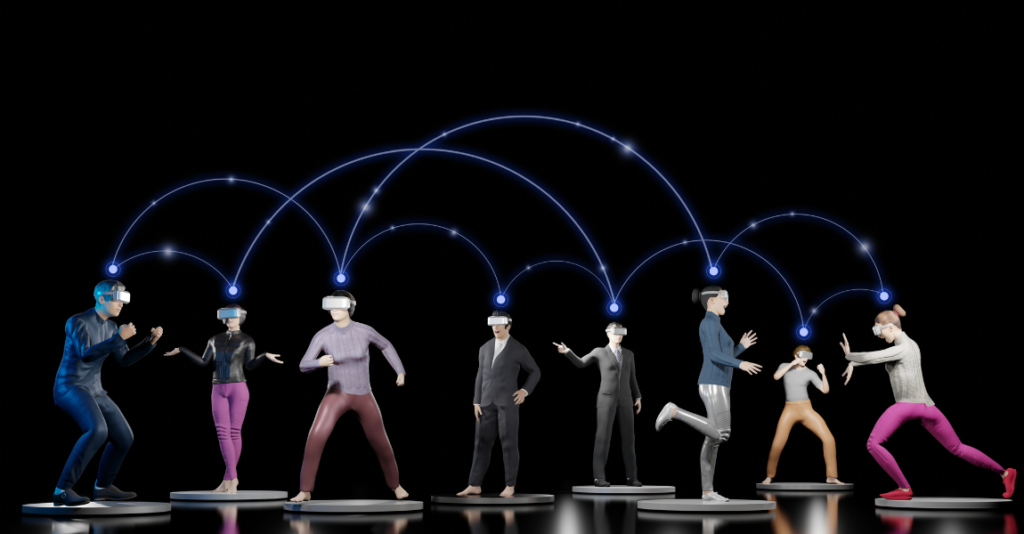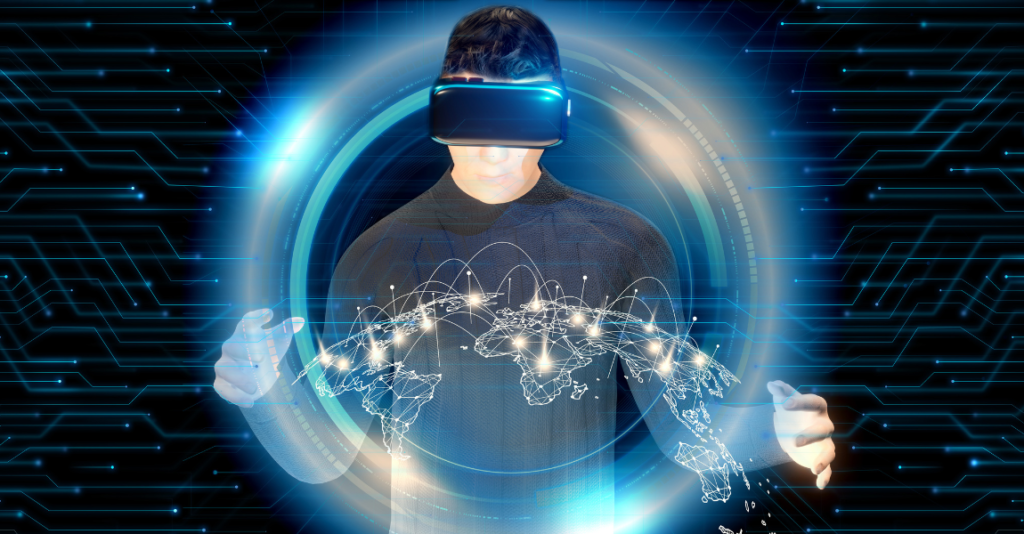Revolutionizing Human Interaction in the Metaverse
Revolutionizing Human Interaction in the Metaverse

 KOOP360
KOOP360
·
Follow
Published in
Coinmonks
4 min read
·
1 day ago
Listen
Share
More
Metaverse
Human Interaction in The Metaverse | WiFi Sensing
WiFi sensing and MaskFi revolutionize real-time human interaction for an unparalleled virtual experience.
koop360.com
In a recent breakthrough, a team of researchers from Nanyang Technological University in Singapore has introduced a cutting-edge method for tracking human movement in the metaverse. Their innovative approach involves the integration of WiFi sensing, harnessing radio signals to sense objects in space and providing a real-time representation of the physical world in the digital realm.
 This article explores the significance of this development, how WiFi sensing overcomes existing limitations, and the role of artificial intelligence, specifically the MaskFi system, in revolutionizing human activity recognition (HAR) for the metaverse.
This article explores the significance of this development, how WiFi sensing overcomes existing limitations, and the role of artificial intelligence, specifically the MaskFi system, in revolutionizing human activity recognition (HAR) for the metaverse.
The Challenges of Current Metaverse Tracking Systems:
 Traditionally, capturing human activity in the metaverse has relied on device-based sensors, cameras, or a combination of both. However, these modalities have inherent limitations. Device-based sensing systems, such as motion-sensing handheld controllers, can only capture information from one point on the human body, limiting their ability to model complex activities. On the other hand, camera-based tracking systems face challenges in low-light environments and when confronted with physical obstructions.
Traditionally, capturing human activity in the metaverse has relied on device-based sensors, cameras, or a combination of both. However, these modalities have inherent limitations. Device-based sensing systems, such as motion-sensing handheld controllers, can only capture information from one point on the human body, limiting their ability to model complex activities. On the other hand, camera-based tracking systems face challenges in low-light environments and when confronted with physical obstructions.
WiFi Sensing: A Game-Changer in Metaverse Tracking:
WiFi sensing, a technique that has been used by scientists for years, utilizes radio signals to send and receive WiFi data, similar to radar. This technology has the unique capability to fine-tune sensors to pick up intricate details such as heartbeats, breathing patterns, and even human presence through walls. The integration of WiFi sensing into metaverse tracking systems has the potential to overcome the limitations posed by traditional methods.
The Role of Artificial Intelligence in WiFi Sensing:
WiFi tracking for human activity recognition relies on sophisticated artificial intelligence models. However, training these models traditionally demands massive labeled datasets, a cumbersome and time-consuming process. The Singaporean research team addressed this challenge by introducing “MaskFi,” an innovative unsupervised multimodal HAR solution.
MaskFi: Unsupervised Learning Revolutionizes Model Training:
MaskFi represents a groundbreaking advancement in unsupervised learning. In this paradigm, an AI model is initially pretrained on a smaller dataset, and through iterative processes, it refines its predictions until achieving a satisfactory level of accuracy. This approach allows researchers to focus on refining the models themselves, alleviating the time-consuming process of building extensive labeled training datasets.
The Achievements of MaskFi:
The Nanyang Technological University team reported that MaskFi achieved an impressive 97% accuracy across two related benchmarks. This remarkable success suggests that MaskFi could catalyze an entirely new metaverse modality — one that offers a real-world, 1:1 representation in real-time. This development opens the door to a more immersive and responsive metaverse experience, where user movements are seamlessly mirrored in the digital realm.
Future Implications and Considerations:
 The integration of WiFi sensing and unsupervised learning in the metaverse is a significant leap forward. As the technology continues to develop, there are several potential implications and considerations that warrant attention.
The integration of WiFi sensing and unsupervised learning in the metaverse is a significant leap forward. As the technology continues to develop, there are several potential implications and considerations that warrant attention.
Privacy and Ethical Concerns: With the ability to sense human activity through walls, there is a need for robust privacy safeguards. Clear guidelines and ethical frameworks must be established to ensure the responsible and respectful use of WiFi sensing in the metaverse.
Application Diversity: Beyond the metaverse, the combination of WiFi sensing and AI holds promise for diverse applications, such as healthcare monitoring, security, and retail analytics. Exploring these possibilities will contribute to a broader understanding of the technology’s potential impact.
Advancements in Metaverse Realism: The success of MaskFi hints at the possibility of achieving an unprecedented level of realism in the metaverse. Future developments in this technology may pave the way for a metaverse that seamlessly integrates with the physical world, offering users an unparalleled experience.
CONCLUSION The integration of WiFi sensing and unsupervised learning, exemplified by the MaskFi system, marks a pivotal moment in the evolution of the metaverse. This technological breakthrough not only overcomes the limitations of current tracking systems but also sets the stage for a metaverse with real-time, 1:1 representations of the physical world. As researchers continue to refine and expand upon these innovations, the future of the metaverse appears brighter and more immersive than ever before
The integration of WiFi sensing and unsupervised learning, exemplified by the MaskFi system, marks a pivotal moment in the evolution of the metaverse. This technological breakthrough not only overcomes the limitations of current tracking systems but also sets the stage for a metaverse with real-time, 1:1 representations of the physical world. As researchers continue to refine and expand upon these innovations, the future of the metaverse appears brighter and more immersive than ever before






























![[LIVE] Engage2Earn: auspol follower rush](https://cdn.bulbapp.io/frontend/images/c1a761de-5ce9-4e9b-b5b3-dc009e60bfa8/1)
